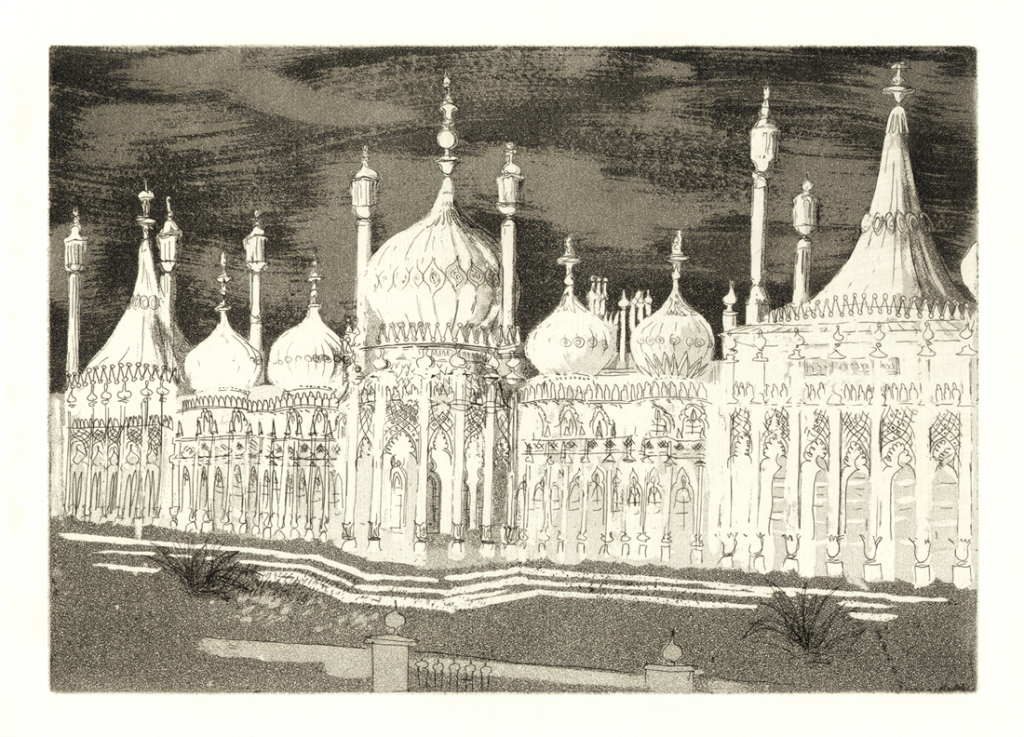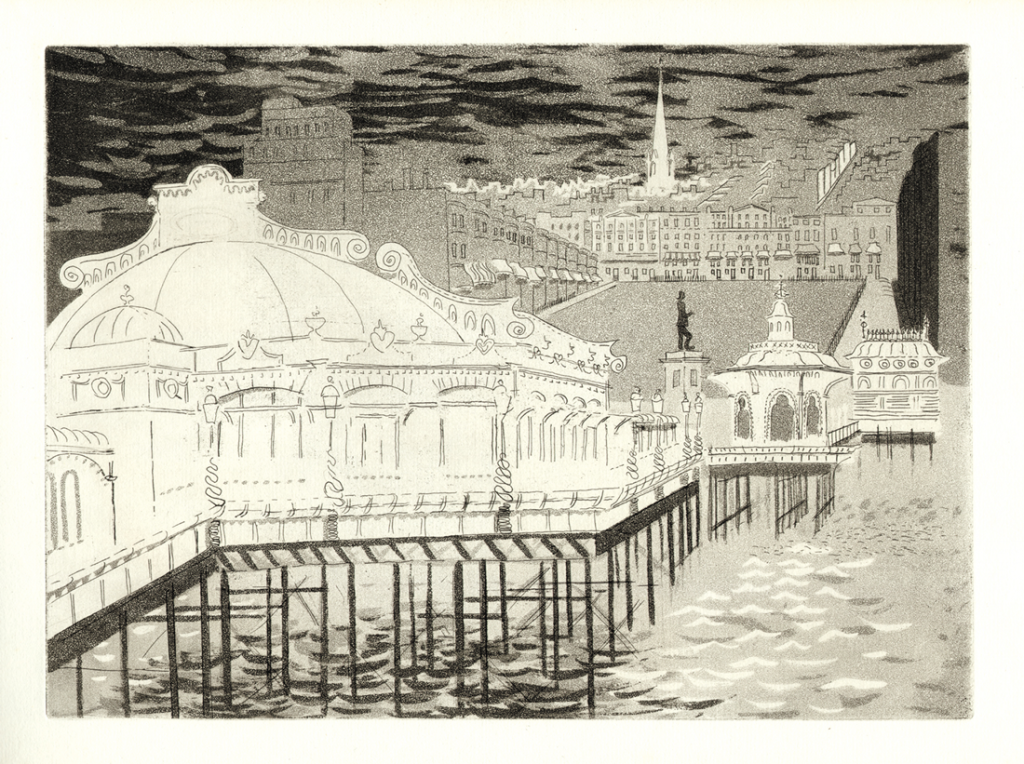
John Piper’s ‘Brighton Aquatints’ was published in late November 1939 just after the outbreak of the Second World War by Gerald Duckworth Ltd. Two-hundred and fifty sets were printed from the original steel-faced copper plates and of these fifty-five sets were hand coloured.
John Piper’s ‘Brighton Aquatints’ rarely comes to auction and is now valued in the thousands. But The Mainstone Press’ 2019 edition, with its excellent introduction and essay by Alan Powers, provides a beautiful and accessible way to enjoy the images and text of the rare original volumes.
Piper revived the early 19th century print making medium of aquatint. At first glance the images with their facing text could appear to record the passing of an age. But the book has a textural, stylized quality which gives expression to deeply held emotions connected with place. It shows Piper’s awareness and interest in modernism and abstraction – a romantic modernism.
The book consist of twelve aquatints of Brighton. The illustrations were printed by the two Alexander brothers who had a basement workshop in Henrietta Street, Covent Garden, London. The watermarks which appear in the paper are irregularly placed and are styled as a hand raised in blessing, a head, said to be that of Christ, and the date 1399.
The process of creating an aquatint involves exposing a plate, usually of copper or zinc, to acid through an applied layer of granulated, melted resin. The acid incises the plate between the granules creating areas of evenly pitted surface. This can be varied by applying additional resin, scraping and burnishing. Different strengths of acids are also employed. When the grains are removed and the plate is printed it results in variations of tone. The effect often resembles watercolours and wash drawings, hence the name Aquatint.
As you know I visited the Royal Pavilion Brighton only a few weeks ago. The scene was reminiscent of Piper’s view of the ‘The Royal Pavilion’ which remains remarkably unchanged from his 1939 aquatint. In his notes Piper describes the building’s extravagant beauty and the great affection in which it is held.

In ‘Regency Square from the West Pier’ we are reminded of a view now lost to us. John Piper describes how the pier appears like a ‘dazzling white meringue, brittle and sweet…florid and grand as anywhere.’ Regency Square is laid out on a gentle slope in the view beyond.
In some ways John Piper’s Brighton Aquatints is representative of a collective English re-thinking of the role of locality and place in relation to our identity. In the 1930s, as today, there were many who claimed that these things did not matter. But this book speaks persuasively of the importance and value of place to English identity. As we seek to answer the housing needs of our nation I hope that imaginative architecture, and a celebration of the regional and vernacular will speak to our identity as a nation and create homes where our families can flourish.